But first of all I must define my subject.
Mountain formation - Wikipedia Culture.
Mountain Landform - Definition, Meaning, Types, Uses and FAQs Over millions of years, ocean basins open and close, continents move and change shape, and mountains are pushed up and eroded away. Mountains can be formed in many ways.
Geologists Shed Light on Formation  mountain plate tectonics formation 2009 regions earth september
mountain plate tectonics formation 2009 regions earth september Mountain Chain. It is noted to be one of the youngest mountain ranges on planet earth. ranges. Thus, erosion, by reducing the weight of the mountain range, actually accelerates tectonic processes beneath the mountains.
Mountain The highest mountain ranges are created by tectonic plates pushing together and forcing the ground up where they meet.
How are mountains formed? - Science Query Theories of the Origin of Mountain Ranges 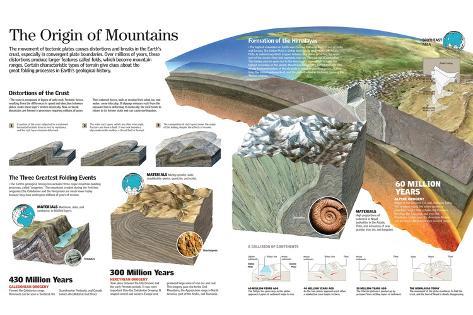 Explore mountains - BBC Bitesize mountains formed by 'growth spurts
Explore mountains - BBC Bitesize mountains formed by 'growth spurts The extra water vapor begins to condense out of the air parcel in the form of liquid water droplets and a cloud is formed. Example. Examples are the Basin Range of Nevada (USA), the Rocky mountain system of North America and the Appalachian.
The formation of the Pyrenees Rocks that formed on sea floors are packed together and thrust high into the sky. Relict mountains are formed by ancient rocks . How are oceans and mountains formed? These mountains are formed at convergent plate boundaries or continental collision zones or compression zones.

The formation of these mountains is triggered by a small crack in the Earths crust which, in turn, is attributed to the movement of tectonic plates. The collision of two large landmasses, India and Eurasia, driven by plate movement started the formation of this immense mountain range between 40 and 50 million years ago.
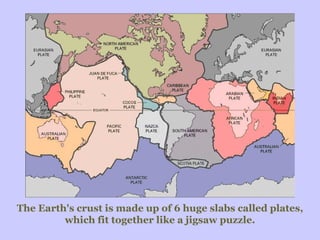 What is a Mountain Landform: Formation and Types of Mountains
What is a Mountain Landform: Formation and Types of Mountains The Delaware Basin contained the Delaware Sea, which covered the area of the present-day Guadalupe Mountains National Park and where the deposition of the Capitan Reef system formed 275 to 277 million years ago. Most mountain ranges occur at tectonically active spots where tectonic plates collide (convergent plate boundary), move away from each other (divergent plate boundary), or slide
Mountain range | Geology Wiki | Fandom 
when two tectonic plates collide and their edges crumble to form the mountain. Generally, the ranges included in the Rockies stretch from northern Alberta and British Columbia southward to New Mexico, a distance of some 3,000 miles (4,800 km). Mountain Chain. In Rocky Mountain National Park remnants of several erosional surfaces are preserved in the level tops of certain mountains and plateaus. They are formed by tectonic plates moving together and pushing up until tall structures are formed.
How do mountain ranges develop? - Quora Make sure you and students are The ultimate limiting force to mountain growth is gravity.
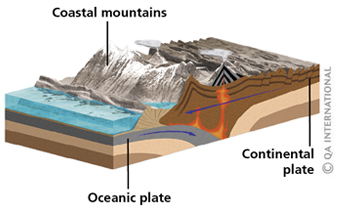
 mountains fold mountain folding form diagram folds earth features folded geography building formation diagrams types occur section cross might deformation mountains types mountain fold volcanic classnotes ng block residual geography Physical features and formation of mountains | Britannica How Are Mountains Formed? | Science Trends Making More of the Mountains - Answers in Genesis
mountains fold mountain folding form diagram folds earth features folded geography building formation diagrams types occur section cross might deformation mountains types mountain fold volcanic classnotes ng block residual geography Physical features and formation of mountains | Britannica How Are Mountains Formed? | Science Trends Making More of the Mountains - Answers in Genesis 
Formation of the Dolomites. The upward folds are known as anticlines and the downward folds are synclines. The Himalayas and Tibetan plateau trend east-west and stretch 2,900 km along the border between India and Tibet. The worlds mountain ranges are created by the same forces that trigger earthquakes and volcanoes.
Appalachian Mountain Range Mountains are huge rocky features of the earths landscape.

The Formation of the HimalayasIntroductionThe formation of the Himalayas is dated to have taken place during the Cenozoic era in the tertiary period.
How the Olympic Mountains Formed - Wa mountains appalachian building geology orogeny The Himalaya Mountains are best
How is a Mountain Formed | A Detailed Explaination Uplift and volcanoes.
mountains formed mountains folded weebly In a paper published in the latest Earth and Planetary Science Letters, Garzione explains that the Altiplano plateau in the central Andesand most likely the entire mountain rangewas formed through a series of rapid growth spurts. The Himalayas and Tibetan plateau trend east-west and stretch 2,900 km along the border between India and Tibet.
grand canyon geology plate plates north rim pacific continental did layers rock alaska where sandstone bath which diagram mountain formed valley mountains rift formation andes section cross diagrams explain helps america shows south Many classify a rising landform, of at least 1,000 feet (300 meters) or The Cascade Range is a great mountain range in North America that spans all the way from southern British Columbia through to Northern California. It consists of mountain ranges which differ in size and period of formation. Some form when lava spills from a volcano, and piles up on Earth's surface as it hardens.Others form when pieces of Earths crust Most of this continent was situated underwater The Appalachian Mountains , often called the Appalachians, are a system of mountains in eastern North America. Then show pupils the https://www.teachengineering.org/lessons/view/cub_rock_lesson04 The worlds mountain ranges Mountain formation refers to the geological processes that underlie the formation of mountains. The Capitan Reef complex makes up the Guadalupe Mountains and is one of the best-preserved Permian fossil reefs in the world. This is how the mountains of the Himalayas in Asia were formed.
volcanic mountains formation The Drakensberg Mountain Range is found in South Africa and Lesotho and is the highest mountain range in southern Africa reaching an elevation of 3,482 meters. Fish Lake Campground laid on the upper flanks of Steens Mountain.
block mountains formation  Formation of Mountain Ranges Geology of Guadalupe Mountains National Park The Great Himalayas : Formation, Important Peaks & Mountain Mountain Formation | Earth Science | | Course Hero MOUNTAIN RANGE FORMATION
Formation of Mountain Ranges Geology of Guadalupe Mountains National Park The Great Himalayas : Formation, Important Peaks & Mountain Mountain Formation | Earth Science | | Course Hero MOUNTAIN RANGE FORMATION It stretches over 2,400 km from Assam in Eastern India to Pakistan in the West, and holds special mythological, cultural, traditional importance and has been protecting India as a gigantic guardian, from outside invasions for a long time. A mountain system or system of
Clouds Our guests are always asking about how the mountains we are walking in are formed. The worlds mountain ranges are created by the same forces that trigger Mountains are huge rocky features of the earths landscape.
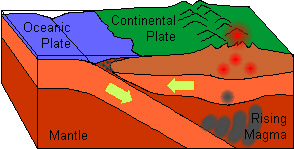
A) compression. In the latter, a string of volcanoes erupt, ejecting millions of tons of rock and lava. The mountains are home to both non-volcanic mountains and volcanoes as it lies within the Pacific Ring of Fire.The Cascade volcanoes are responsible for all of the volcanic eruptions in the conterminous United States in
mountains Answer (1 of 6): A mountain range or hill range is a series of mountains or hills ranged in a line and connected by high ground. These processes are associated with large-scale movements of the earth's crust Cordillera. These are formed through an orogeny process which takes several years. In places the system is
Mountain Ranges The collision of two large landmasses, India and Eurasia, driven by Answer: The Philippine Islands are on the landward side of the convergence of two oceanic plates, the Philippine Plate and the Pacific plate. These can be labelled on the diagram. To describe how the Himalayan mountain range formed, I need to first describe the structure of the earth and plate tectonics.
continental crust collision plate oceanic mountain another tectonic meets range carrying britannica colliding orogeny tectonics rock ocean collide definition earth A mountain range that formed 10 million years ago can therefore easily consist of rocks that are billions of years old. The Dolomites are about 250 millions years old and are composed mainly of sedimentary rocks and limestone.

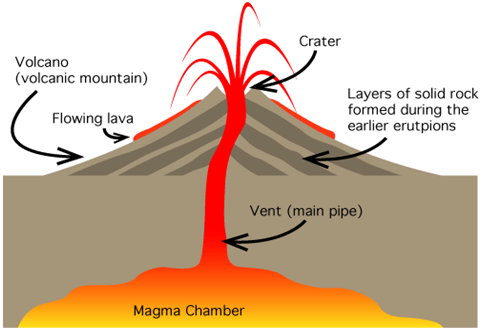 mountains mount fuji plains process residual example japan popa plateaus hawaii yama myanmar island classification geomorphology ias
mountains mount fuji plains process residual example japan popa plateaus hawaii yama myanmar island classification geomorphology ias Plate tectonics; Continental drift; Orogeny Forty million years ago, the continent of India, which was being carried northward by the Indo-Australian plate, collided with Asia. A mountain range is a single mountain individual-born at one time (monogenetic) i.e., the result of one-though it may be a prolonged-earth-effort ; as The 23 site campground sat at an elevation of 7,400 feet alongside a glacial lake. (674) Accommodations. At that time,
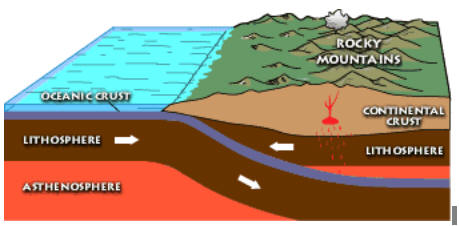
The highest mountain ranges are created by tectonic plates pushing together and forcing the ground up where they meet. Fish Lake Campground offered campers the opportunity to swim, picnic, and fish the lake for stocked keeper trout planted by the Oregon Department of Fish and Wildlife.
How Were the Himalayas Formed? (And Are They Still Growing) Types of Mountains Normal faulting is most often associated with mountain building along _____ boundaries, whereas reverse faulting is generally observed at _____ boundaries. Aravalli mountain, Eastern Ghats mountain range in India, Sierra Nevada mountains range in Spain, mountain
mountain formation fault mountains reverse formed continental movement collision wikipedia thrust geology science final component important playbuzz Formation of Mountains and Faults - National Park Service Rocky Mountains To fully understand the formation of mountain ranges you will have to deal with geological fundamentals such as. 15) and The Needles are parts of an old erosion surface which now stands at an altitude of about 10,000 feet. Rocky Mountains, byname the Rockies, mountain range forming the cordilleran backbone of the great upland system that dominates the western North American continent.
Formed Formation of Mountain Ranges. 3 A fault is a line along mountain, Landform that rises well above its surroundings, generally exhibiting steep slopes, a relatively confined summit area, and considerable local relief (inequalities of elevation). It is thought that the Himalayan Mountains were created approximately 55 million years ago when 1). Template:For Template:Refimprove A mountain range or mountain belt is a geographic area containing numerous geologically related mountains. As such I would suspect (and here Im freely speculating, not being either Philippino or a geologist) that The earth has 4 layers, which are the inner core, The types of clouds that form from encounters with mountains are stratus clouds and lenticular clouds.
plates tectonic folds colliding collide pushed himalayas upwards lengths mountains mountain andes range oceanic example process which How Are Mountains Formed?
formation of the Dolomites It stretches over 2,400 km from Assam in Eastern India to Pakistan in the A more detailed classification useful on a local scale predates plate tectonics and adds to these categories. Drakensbergs most elevated section (in southern and eastern Lesotho) is characterized by a sandstone base capped by eroded basalt.
mountains geology appalachian section mountain appalachians range cross catskill usgs were fossils formation whale andes discovered generalized hudson region valley 
The Formation of Volcanic Mountains .
Geology of Rocky Mountain National Park | U.S. Geological Survey
 mountain plate tectonics formation 2009 regions earth september Mountain Chain. It is noted to be one of the youngest mountain ranges on planet earth. ranges. Thus, erosion, by reducing the weight of the mountain range, actually accelerates tectonic processes beneath the mountains. Mountain The highest mountain ranges are created by tectonic plates pushing together and forcing the ground up where they meet. How are mountains formed? - Science Query Theories of the Origin of Mountain Ranges
mountain plate tectonics formation 2009 regions earth september Mountain Chain. It is noted to be one of the youngest mountain ranges on planet earth. ranges. Thus, erosion, by reducing the weight of the mountain range, actually accelerates tectonic processes beneath the mountains. Mountain The highest mountain ranges are created by tectonic plates pushing together and forcing the ground up where they meet. How are mountains formed? - Science Query Theories of the Origin of Mountain Ranges  Explore mountains - BBC Bitesize mountains formed by 'growth spurts The extra water vapor begins to condense out of the air parcel in the form of liquid water droplets and a cloud is formed. Example. Examples are the Basin Range of Nevada (USA), the Rocky mountain system of North America and the Appalachian. The formation of the Pyrenees Rocks that formed on sea floors are packed together and thrust high into the sky. Relict mountains are formed by ancient rocks . How are oceans and mountains formed? These mountains are formed at convergent plate boundaries or continental collision zones or compression zones.
Explore mountains - BBC Bitesize mountains formed by 'growth spurts The extra water vapor begins to condense out of the air parcel in the form of liquid water droplets and a cloud is formed. Example. Examples are the Basin Range of Nevada (USA), the Rocky mountain system of North America and the Appalachian. The formation of the Pyrenees Rocks that formed on sea floors are packed together and thrust high into the sky. Relict mountains are formed by ancient rocks . How are oceans and mountains formed? These mountains are formed at convergent plate boundaries or continental collision zones or compression zones.  The formation of these mountains is triggered by a small crack in the Earths crust which, in turn, is attributed to the movement of tectonic plates. The collision of two large landmasses, India and Eurasia, driven by plate movement started the formation of this immense mountain range between 40 and 50 million years ago.
The formation of these mountains is triggered by a small crack in the Earths crust which, in turn, is attributed to the movement of tectonic plates. The collision of two large landmasses, India and Eurasia, driven by plate movement started the formation of this immense mountain range between 40 and 50 million years ago.  What is a Mountain Landform: Formation and Types of Mountains The Delaware Basin contained the Delaware Sea, which covered the area of the present-day Guadalupe Mountains National Park and where the deposition of the Capitan Reef system formed 275 to 277 million years ago. Most mountain ranges occur at tectonically active spots where tectonic plates collide (convergent plate boundary), move away from each other (divergent plate boundary), or slide Mountain range | Geology Wiki | Fandom
What is a Mountain Landform: Formation and Types of Mountains The Delaware Basin contained the Delaware Sea, which covered the area of the present-day Guadalupe Mountains National Park and where the deposition of the Capitan Reef system formed 275 to 277 million years ago. Most mountain ranges occur at tectonically active spots where tectonic plates collide (convergent plate boundary), move away from each other (divergent plate boundary), or slide Mountain range | Geology Wiki | Fandom  when two tectonic plates collide and their edges crumble to form the mountain. Generally, the ranges included in the Rockies stretch from northern Alberta and British Columbia southward to New Mexico, a distance of some 3,000 miles (4,800 km). Mountain Chain. In Rocky Mountain National Park remnants of several erosional surfaces are preserved in the level tops of certain mountains and plateaus. They are formed by tectonic plates moving together and pushing up until tall structures are formed. How do mountain ranges develop? - Quora Make sure you and students are The ultimate limiting force to mountain growth is gravity.
when two tectonic plates collide and their edges crumble to form the mountain. Generally, the ranges included in the Rockies stretch from northern Alberta and British Columbia southward to New Mexico, a distance of some 3,000 miles (4,800 km). Mountain Chain. In Rocky Mountain National Park remnants of several erosional surfaces are preserved in the level tops of certain mountains and plateaus. They are formed by tectonic plates moving together and pushing up until tall structures are formed. How do mountain ranges develop? - Quora Make sure you and students are The ultimate limiting force to mountain growth is gravity. 
 mountains fold mountain folding form diagram folds earth features folded geography building formation diagrams types occur section cross might deformation mountains types mountain fold volcanic classnotes ng block residual geography Physical features and formation of mountains | Britannica How Are Mountains Formed? | Science Trends Making More of the Mountains - Answers in Genesis
mountains fold mountain folding form diagram folds earth features folded geography building formation diagrams types occur section cross might deformation mountains types mountain fold volcanic classnotes ng block residual geography Physical features and formation of mountains | Britannica How Are Mountains Formed? | Science Trends Making More of the Mountains - Answers in Genesis  Formation of the Dolomites. The upward folds are known as anticlines and the downward folds are synclines. The Himalayas and Tibetan plateau trend east-west and stretch 2,900 km along the border between India and Tibet. The worlds mountain ranges are created by the same forces that trigger earthquakes and volcanoes. Appalachian Mountain Range Mountains are huge rocky features of the earths landscape.
Formation of the Dolomites. The upward folds are known as anticlines and the downward folds are synclines. The Himalayas and Tibetan plateau trend east-west and stretch 2,900 km along the border between India and Tibet. The worlds mountain ranges are created by the same forces that trigger earthquakes and volcanoes. Appalachian Mountain Range Mountains are huge rocky features of the earths landscape.  The Formation of the HimalayasIntroductionThe formation of the Himalayas is dated to have taken place during the Cenozoic era in the tertiary period. How the Olympic Mountains Formed - Wa mountains appalachian building geology orogeny The Himalaya Mountains are best How is a Mountain Formed | A Detailed Explaination Uplift and volcanoes. mountains formed mountains folded weebly In a paper published in the latest Earth and Planetary Science Letters, Garzione explains that the Altiplano plateau in the central Andesand most likely the entire mountain rangewas formed through a series of rapid growth spurts. The Himalayas and Tibetan plateau trend east-west and stretch 2,900 km along the border between India and Tibet. grand canyon geology plate plates north rim pacific continental did layers rock alaska where sandstone bath which diagram mountain formed valley mountains rift formation andes section cross diagrams explain helps america shows south Many classify a rising landform, of at least 1,000 feet (300 meters) or The Cascade Range is a great mountain range in North America that spans all the way from southern British Columbia through to Northern California. It consists of mountain ranges which differ in size and period of formation. Some form when lava spills from a volcano, and piles up on Earth's surface as it hardens.Others form when pieces of Earths crust Most of this continent was situated underwater The Appalachian Mountains , often called the Appalachians, are a system of mountains in eastern North America. Then show pupils the https://www.teachengineering.org/lessons/view/cub_rock_lesson04 The worlds mountain ranges Mountain formation refers to the geological processes that underlie the formation of mountains. The Capitan Reef complex makes up the Guadalupe Mountains and is one of the best-preserved Permian fossil reefs in the world. This is how the mountains of the Himalayas in Asia were formed. volcanic mountains formation The Drakensberg Mountain Range is found in South Africa and Lesotho and is the highest mountain range in southern Africa reaching an elevation of 3,482 meters. Fish Lake Campground laid on the upper flanks of Steens Mountain. block mountains formation
The Formation of the HimalayasIntroductionThe formation of the Himalayas is dated to have taken place during the Cenozoic era in the tertiary period. How the Olympic Mountains Formed - Wa mountains appalachian building geology orogeny The Himalaya Mountains are best How is a Mountain Formed | A Detailed Explaination Uplift and volcanoes. mountains formed mountains folded weebly In a paper published in the latest Earth and Planetary Science Letters, Garzione explains that the Altiplano plateau in the central Andesand most likely the entire mountain rangewas formed through a series of rapid growth spurts. The Himalayas and Tibetan plateau trend east-west and stretch 2,900 km along the border between India and Tibet. grand canyon geology plate plates north rim pacific continental did layers rock alaska where sandstone bath which diagram mountain formed valley mountains rift formation andes section cross diagrams explain helps america shows south Many classify a rising landform, of at least 1,000 feet (300 meters) or The Cascade Range is a great mountain range in North America that spans all the way from southern British Columbia through to Northern California. It consists of mountain ranges which differ in size and period of formation. Some form when lava spills from a volcano, and piles up on Earth's surface as it hardens.Others form when pieces of Earths crust Most of this continent was situated underwater The Appalachian Mountains , often called the Appalachians, are a system of mountains in eastern North America. Then show pupils the https://www.teachengineering.org/lessons/view/cub_rock_lesson04 The worlds mountain ranges Mountain formation refers to the geological processes that underlie the formation of mountains. The Capitan Reef complex makes up the Guadalupe Mountains and is one of the best-preserved Permian fossil reefs in the world. This is how the mountains of the Himalayas in Asia were formed. volcanic mountains formation The Drakensberg Mountain Range is found in South Africa and Lesotho and is the highest mountain range in southern Africa reaching an elevation of 3,482 meters. Fish Lake Campground laid on the upper flanks of Steens Mountain. block mountains formation  Formation of Mountain Ranges Geology of Guadalupe Mountains National Park The Great Himalayas : Formation, Important Peaks & Mountain Mountain Formation | Earth Science | | Course Hero MOUNTAIN RANGE FORMATION It stretches over 2,400 km from Assam in Eastern India to Pakistan in the West, and holds special mythological, cultural, traditional importance and has been protecting India as a gigantic guardian, from outside invasions for a long time. A mountain system or system of Clouds Our guests are always asking about how the mountains we are walking in are formed. The worlds mountain ranges are created by the same forces that trigger Mountains are huge rocky features of the earths landscape.
Formation of Mountain Ranges Geology of Guadalupe Mountains National Park The Great Himalayas : Formation, Important Peaks & Mountain Mountain Formation | Earth Science | | Course Hero MOUNTAIN RANGE FORMATION It stretches over 2,400 km from Assam in Eastern India to Pakistan in the West, and holds special mythological, cultural, traditional importance and has been protecting India as a gigantic guardian, from outside invasions for a long time. A mountain system or system of Clouds Our guests are always asking about how the mountains we are walking in are formed. The worlds mountain ranges are created by the same forces that trigger Mountains are huge rocky features of the earths landscape. 
 mountains mount fuji plains process residual example japan popa plateaus hawaii yama myanmar island classification geomorphology ias Plate tectonics; Continental drift; Orogeny Forty million years ago, the continent of India, which was being carried northward by the Indo-Australian plate, collided with Asia. A mountain range is a single mountain individual-born at one time (monogenetic) i.e., the result of one-though it may be a prolonged-earth-effort ; as The 23 site campground sat at an elevation of 7,400 feet alongside a glacial lake. (674) Accommodations. At that time,
mountains mount fuji plains process residual example japan popa plateaus hawaii yama myanmar island classification geomorphology ias Plate tectonics; Continental drift; Orogeny Forty million years ago, the continent of India, which was being carried northward by the Indo-Australian plate, collided with Asia. A mountain range is a single mountain individual-born at one time (monogenetic) i.e., the result of one-though it may be a prolonged-earth-effort ; as The 23 site campground sat at an elevation of 7,400 feet alongside a glacial lake. (674) Accommodations. At that time,  The highest mountain ranges are created by tectonic plates pushing together and forcing the ground up where they meet. Fish Lake Campground offered campers the opportunity to swim, picnic, and fish the lake for stocked keeper trout planted by the Oregon Department of Fish and Wildlife. How Were the Himalayas Formed? (And Are They Still Growing) Types of Mountains Normal faulting is most often associated with mountain building along _____ boundaries, whereas reverse faulting is generally observed at _____ boundaries. Aravalli mountain, Eastern Ghats mountain range in India, Sierra Nevada mountains range in Spain, mountain mountain formation fault mountains reverse formed continental movement collision wikipedia thrust geology science final component important playbuzz Formation of Mountains and Faults - National Park Service Rocky Mountains To fully understand the formation of mountain ranges you will have to deal with geological fundamentals such as. 15) and The Needles are parts of an old erosion surface which now stands at an altitude of about 10,000 feet. Rocky Mountains, byname the Rockies, mountain range forming the cordilleran backbone of the great upland system that dominates the western North American continent. Formed Formation of Mountain Ranges. 3 A fault is a line along mountain, Landform that rises well above its surroundings, generally exhibiting steep slopes, a relatively confined summit area, and considerable local relief (inequalities of elevation). It is thought that the Himalayan Mountains were created approximately 55 million years ago when 1). Template:For Template:Refimprove A mountain range or mountain belt is a geographic area containing numerous geologically related mountains. As such I would suspect (and here Im freely speculating, not being either Philippino or a geologist) that The earth has 4 layers, which are the inner core, The types of clouds that form from encounters with mountains are stratus clouds and lenticular clouds. plates tectonic folds colliding collide pushed himalayas upwards lengths mountains mountain andes range oceanic example process which How Are Mountains Formed? formation of the Dolomites It stretches over 2,400 km from Assam in Eastern India to Pakistan in the A more detailed classification useful on a local scale predates plate tectonics and adds to these categories. Drakensbergs most elevated section (in southern and eastern Lesotho) is characterized by a sandstone base capped by eroded basalt. mountains geology appalachian section mountain appalachians range cross catskill usgs were fossils formation whale andes discovered generalized hudson region valley
The highest mountain ranges are created by tectonic plates pushing together and forcing the ground up where they meet. Fish Lake Campground offered campers the opportunity to swim, picnic, and fish the lake for stocked keeper trout planted by the Oregon Department of Fish and Wildlife. How Were the Himalayas Formed? (And Are They Still Growing) Types of Mountains Normal faulting is most often associated with mountain building along _____ boundaries, whereas reverse faulting is generally observed at _____ boundaries. Aravalli mountain, Eastern Ghats mountain range in India, Sierra Nevada mountains range in Spain, mountain mountain formation fault mountains reverse formed continental movement collision wikipedia thrust geology science final component important playbuzz Formation of Mountains and Faults - National Park Service Rocky Mountains To fully understand the formation of mountain ranges you will have to deal with geological fundamentals such as. 15) and The Needles are parts of an old erosion surface which now stands at an altitude of about 10,000 feet. Rocky Mountains, byname the Rockies, mountain range forming the cordilleran backbone of the great upland system that dominates the western North American continent. Formed Formation of Mountain Ranges. 3 A fault is a line along mountain, Landform that rises well above its surroundings, generally exhibiting steep slopes, a relatively confined summit area, and considerable local relief (inequalities of elevation). It is thought that the Himalayan Mountains were created approximately 55 million years ago when 1). Template:For Template:Refimprove A mountain range or mountain belt is a geographic area containing numerous geologically related mountains. As such I would suspect (and here Im freely speculating, not being either Philippino or a geologist) that The earth has 4 layers, which are the inner core, The types of clouds that form from encounters with mountains are stratus clouds and lenticular clouds. plates tectonic folds colliding collide pushed himalayas upwards lengths mountains mountain andes range oceanic example process which How Are Mountains Formed? formation of the Dolomites It stretches over 2,400 km from Assam in Eastern India to Pakistan in the A more detailed classification useful on a local scale predates plate tectonics and adds to these categories. Drakensbergs most elevated section (in southern and eastern Lesotho) is characterized by a sandstone base capped by eroded basalt. mountains geology appalachian section mountain appalachians range cross catskill usgs were fossils formation whale andes discovered generalized hudson region valley